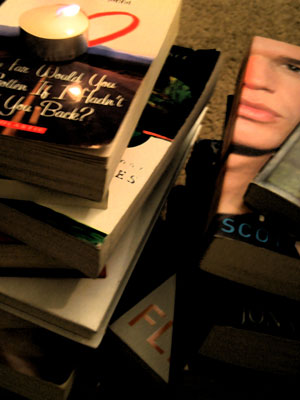All Nonfiction
- Bullying
- Books
- Academic
- Author Interviews
- Celebrity interviews
- College Articles
- College Essays
- Educator of the Year
- Heroes
- Interviews
- Memoir
- Personal Experience
- Sports
- Travel & Culture
All Opinions
- Bullying
- Current Events / Politics
- Discrimination
- Drugs / Alcohol / Smoking
- Entertainment / Celebrities
- Environment
- Love / Relationships
- Movies / Music / TV
- Pop Culture / Trends
- School / College
- Social Issues / Civics
- Spirituality / Religion
- Sports / Hobbies
All Hot Topics
- Bullying
- Community Service
- Environment
- Health
- Letters to the Editor
- Pride & Prejudice
- What Matters
- Back
Summer Guide
- Program Links
- Program Reviews
- Back
College Guide
- College Links
- College Reviews
- College Essays
- College Articles
- Back
The State of Teen Literature
It is easy to see at any book store across the nation. Teen books are changing, evolving into a dysfunctional dystopia. Gone are the days of teen pregnancy and broken friendships. The era of the normal problems has come and gone, leaving in its place a landscape of supernatural characters, post-apocalyptic scenarios, and extreme conflicts. However, there must be a reason, some kind of unifying and redeeming quality. Many teen books have strange plots, characters, and conflicts but deep down they still have meaning.
It is strange time to read teen books. Young Adult literature seems to be anything but realistic. Most people are hard pressed to think of the last time they had to choose between two paranormal entities for a relationship. However bizarre, paranormal romance is all the rage. There is even a designated section in most book sellers. What is it about a ghastly relationship that gets hearts racing and tear ducts working over time? Is it the star-crossed lovers theme—popular since the times of Shakespeare—or is it the depth of the writing? Are everyday teenage lives so mundane that only forbidden love between two entirely different types of beings can brighten them? Whichever way, the genre has teens lining up, waiting for the next big thing, be it a book or a film interpretation.
Another huge trend in teen novels is post-apocalyptic dystopian society themes. Battles to the death are common. Hunger, painful experiences, and traumas beyond most imaginations are lining the shelves of stores everywhere. Societies collapse and horrid new ones are built time and again. Some of the most popular adolescent books in the world have children fighting each other for limited resources, government overthrown, and ruined environments. The books face serious issues far outside present social conditions. Even among the devastation, many books are able to squeeze in relationships, proving either love conquers all or most people have no idea what it takes to live in a world of constant completion for essential life sustaining resources.
The huge shift to romantic teen books with strange or even terrifying plots is different. They leave little to relate to on a superficial level—one based solely on plot, characters, or even mood. However, there must something deeper. Something must keep readers coming back even after the supernatural romances and end of days scenarios have been played out again and again. Perhaps the books bring a new perspective to people. Everyday life seems hard at times, but compared to a place where people are dying horrific deaths or battling demons of the very literal variety, it’s a breeze. Maybe the books are more than just fictional stories with extreme and outlandish plots. There are themes that bring people together. The words aren’t just about vampires, zombies, or witches. They are about friendship, dedication, loyalty, and strength. The books are more than meets the eye.
Even though young adult books seem to be taking a turn for the abnormal, they seem to be retaining what it really important in a novel. Their plots and themes have the potential to go much deeper than many people expect. Hopefully, the books can continue to exceed expectations.

Similar Articles
JOIN THE DISCUSSION
This article has 0 comments.
